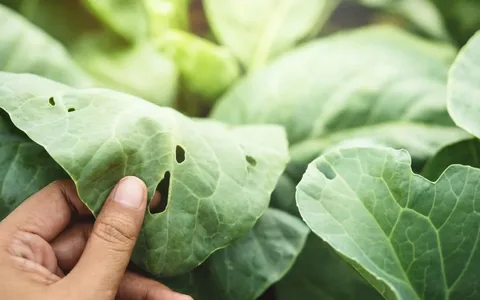How to Take Care of Your Flowers?
Flowers bring beauty and tranquility to any environment, whether they adorn a garden bed or brighten up a living space indoors. Caring for flowers is not just about aesthetics; it’s about nurturing living organisms that contribute to the ecosystem and our well-being. This comprehensive guide delves into essential practices and techniques to help you cultivate healthy, thriving flowers year-round.

Importance of Flower Care
Taking care of your flowers is crucial for their health and longevity. Proper care ensures they remain vibrant and continue to bloom abundantly, enhancing the ambiance of your surroundings. By understanding their specific needs and providing appropriate care, you can enjoy their beauty and reap the rewards of a well-maintained garden or indoor oasis. In the below words you are gonna know how to take care of your flowers; from understanding different types of flowers to seasonal care tips.
Understanding Your Flowers
- Different Types of Flowers and Their Needs
Flowers vary widely in their characteristics and care requirements. Understanding these differences is key to providing tailored care that supports their growth and flowering.
- Annuals vs. Perennials
Annual flowers complete their life cycle in one growing season, requiring regular attention to bloom continuously. Perennials return year after year, benefiting from long-term care practices like pruning and soil enrichment.
- Indoor vs. Outdoor Plants
Indoor plants require specific care due to controlled environments, including light and humidity considerations. Outdoor plants are exposed to natural elements and seasonal changes, necessitating adaptable care routines.
Soil and Fertilization Tips
- Choosing the Right Soil Mix
Select well-draining soil with the right balance of organic matter and nutrients suited to your flower’s needs. Consider factors like pH levels and soil structure to support healthy root development.
- pH Levels and Soil
Amendments Monitor and adjust soil pH to optimize nutrient availability and uptake. Incorporate organic amendments like compost or aged manure to improve soil fertility and texture.
- Soil Drainage Considerations
Ensure adequate drainage to prevent waterlogged soil, which can lead to root rot and other plant health issues. Use raised beds or amend heavy soils with perlite or sand to enhance drainage.
Importance of Fertilization
- Organic vs. Synthetic Fertilizers
Choose fertilizers based on your gardening philosophy and flower type. Organic fertilizers enrich soil health over time, while synthetic options provide immediate nutrient uptake for rapid plant growth. - How Often to Fertilize Different Types of Flowers
Follow recommended guidelines for fertilizing based on flower type and growth stage. Avoid overfertilizing, which can cause nutrient imbalances and environmental runoff.
Pruning and Deadheading Techniques
- Understanding Pruning
Pruning is essential for maintaining plant health and appearance. Use sharp, clean tools to remove dead or diseased branches, promoting air circulation and new growth.
- Tools Needed for Pruning
Invest in quality pruning shears, loppers, and saws suited to the size and density of the branches you’ll be cutting. Regularly sanitize tools to prevent the spread of diseases between plants.
- Techniques for Different Types of Flowers
Learn specific pruning techniques for shrubs, climbers, and herbaceous plants to enhance flowering and shape. Prune after flowering or during dormant seasons to stimulate healthy growth.
Pruning and Deadheading Techniques
- Understanding Pruning
Pruning is essential for maintaining plant health and appearance. Use sharp, clean tools to remove dead or diseased branches, promoting air circulation and new growth.
- Tools Needed for Pruning
Invest in quality pruning shears, loppers, and saws suited to the size and density of the branches you’ll be cutting. Regularly sanitize tools to prevent the spread of diseases between plants.
- Techniques for Different Types of Flowers
Learn specific pruning techniques for shrubs, climbers, and herbaceous plants to enhance flowering and shape. Prune after flowering or during dormant seasons to stimulate healthy growth.
Benefits of Deadheading
- When and How to Deadhead Flowers
Deadheading spent flowers redirects plant energy into producing new blooms, extending the flowering season. Remove faded flowers promptly to maintain garden aesthetics and encourage continuous bloom.
- Promoting Continuous Bloom
Regular deadheading prevents seed formation and encourages prolific flowering throughout the growing season. It improves overall plant health and enhances floral displays.
Managing Pests and Diseases

- Common Flower Pests
Identify and monitor pests such as aphids, spider mites, and caterpillars that can damage flowers. Implement integrated pest management strategies to minimize pesticide use and preserve beneficial insects.
- Identification and Prevention
Regularly inspect plants for signs of pest infestation or disease symptoms like yellowing leaves or fungal growth. Use cultural practices and natural remedies to prevent and control pests effectively.
- Natural Remedies vs. Chemical Solutions
Consider eco-friendly options like neem oil or insecticidal soap before resorting to chemical pesticides. Use pesticides selectively and according to label instructions to minimize environmental impact.
Recognizing and Treating Common Flower Diseases
- Symptoms to Watch For
Learn to recognize symptoms of common flower diseases such as powdery mildew, leaf spot, or root rot. Early detection allows for prompt treatment and prevents disease spread.
- Steps to Control and Prevent Diseases
Practice good garden hygiene by removing and disposing of infected plant debris. Use fungicides or biological controls as needed to manage disease outbreaks effectively.
Support and Staking Methods
- Why Support Your Flowers?
Supporting flowers with stakes or trellises prevents damage from wind or heavy blooms. It maintains plant shape and enhances garden aesthetics.
- Benefits of Staking
Staking improves air circulation around plants, reducing the risk of fungal diseases and promoting healthier growth. It showcases flowers at their best and prevents them from bending or breaking.
- Types of Support Structures
Choose stakes, cages, or trellises based on plant size and growth habit. Install supports early in the growing season to provide stability without damaging roots.
How to Stake Different Types of Flowers?

- Step-by-Step Staking Techniques
Position stakes or supports close to the plant base without causing injury. Secure stems loosely to allow for natural movement while providing sufficient support.
- Adjusting Support as Flowers Grow
Monitor plant growth and adjust stakes or ties accordingly. Loosen ties or extend stakes to accommodate taller plants and ensure continuous support throughout the growing season.
Seasonal Care Tips
- Spring Care Routine
Prepare flower beds by clearing debris and applying compost or mulch to enrich soil. Prune dead or overgrown branches and divide perennials for rejuvenation.
- Tasks to Perform in Spring
Plant new flowers and transplant seedlings outdoors after the last frost date. Monitor for early signs of pests or diseases and take preventive action to safeguard plant health.
- Preparing for Summer
Mulch around plants to retain moisture and suppress weeds. Provide shade or use shade cloth to protect flowers from excessive heat and sunburn.
Summer Maintenance
- Watering and Sun Protection
Water deeply in the morning to minimize evaporation and ensure plants receive adequate hydration. Shield flowers from intense sunlight with shading or strategic placement.
- Dealing with Heat Stress
Monitor plants for signs of heat stress such as wilting or leaf scorch. Provide additional watering and misting during hot spells to cool plants and maintain vigor.
Overwintering Strategies
- Preparing Flowers for Winter
Trim back dead foliage and apply a thick layer of mulch around plants to insulate roots from freezing temperatures. Cover tender plants with blankets or burlap during frosty nights.
- Frost Protection Techniques
Shield vulnerable flowers from frost damage by covering them overnight with fabric or plastic. Remove covers during the day to allow sunlight and air circulation.
- Bringing Indoor Plants Indoors
Transition potted plants indoors before temperatures drop below their tolerance levels. Place them in well-lit areas away from drafts to prevent shock and maintain growth.
Special Care for Container Gardens
- Choosing the Right Containers
Select containers with adequate drainage and appropriate size for plant growth. Consider materials like ceramic, plastic, or wood based on durability and aesthetic preferences.
- Materials and Size Considerations
Opt for lightweight containers for ease of movement or larger ones to accommodate extensive root systems. Match container size to plant size to prevent overcrowding and ensure adequate root space.
- Drainage and Root Space Ensure containers have drainage holes to prevent waterlogged soil and root rot. Use quality potting mix with added perlite or vermiculite for optimal drainage and nutrient retention.
Tips for Container Garden Maintenance
- Watering and Fertilizing Container Plants
Monitor soil moisture daily during hot weather and adjust watering frequency as needed. Use balanced liquid fertilizer regularly to replenish nutrients depleted by frequent watering.
- Repotting and Refreshing Soil Annually
Repot plants annually to refresh soil and prevent root binding. Prune roots and replace old soil with fresh potting mix to support continued growth and flowering.
Caring for flowers is a gratifying endeavor that enhances your living environment and connects you with nature’s beauty. By mastering essential flower care practices such as proper watering, soil management, pruning, and pest control, you can nurture vibrant and healthy flowers year-round. Embrace the art of flower care to create thriving gardens and enjoy the colorful rewards of your dedication and efforts.
Lorem ipsum dolor sit amet, consectetur adipiscing elit. Ut elit tellus, luctus nec ullamcorper mattis, pulvinar dapibus leo.
